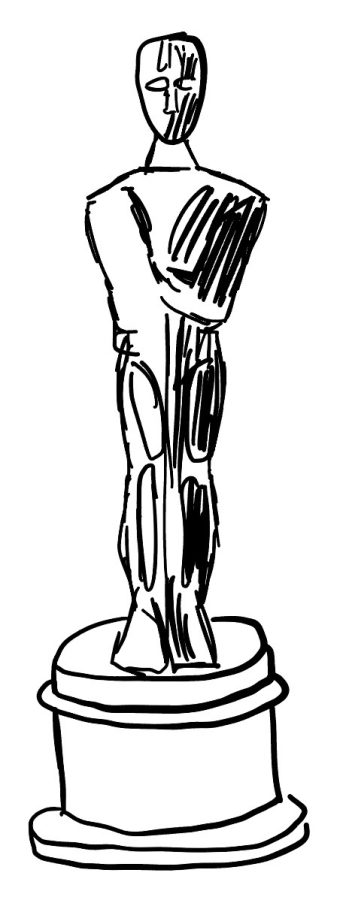Let’s remember our forebears: What made “Everything Everywhere All at Once” possible
“Everything Everywhere All at Once” won big at the Oscars. However, its success would not have been possible without the long lineage of Asian and Asian American creatives struggling to get their stories highlighted in the Western media.
Daniel Kwan and Daniel Scheinert’s 2022 film “Everything Everywhere All at Once” was a box office hit, grossing $135.7 million worldwide just as movie theaters were reopening in the face of easing pandemic restrictions. The film took home seven Oscars in 2023, including Best Actress (Michelle Yeoh), Best Supporting Actor (Ke Huy Quan), Best Supporting Actress (Jamie Lee Curtis), Best Original Screenplay and the coveted Best Picture award.
Michelle Yeoh’s win was particularly monumental, as she is the first Asian actress to receive the Oscar for Best Actress — she is also only the second woman of color to win this award. Yeoh is a Malaysian-born actress known for her roles in “Tomorrow Never Dies” and “Crouching Tiger, Hidden Dragon.” She began her film career acting in Hong Kong martial arts movies, the same industry that propelled Jackie Chan into the spotlight in the 1970s and ‘80s. Without Chan’s standout success, Hong Kong’s martial arts film scene would not have been successful enough to put Yeoh at the forefront of Western media.
The 1990s and early 2000s were a period when Asian and Asian American creatives gained a flood of recognition in the United States. Despite Chan’s initial struggle to make it in the Hollywood landscape, his films “Rumble in the Bronx” and “Rush Hour” were huge ‘90s box office hits. Zhang Yimou, director of “Hero” (2002) and “House of Flying Daggers” (2004), was nominated for three Best Foreign Language Oscars. And in 1994, Margaret Cho’s television series “All American Girl”, a show highlighting the experience of a Korean American family in San Francisco, began airing on ABC.
The 1993 film adaptation of Amy Tan’s “The Joy Luck Club” put Asian American voices into the Western spotlight. It was the first major Hollywood motion picture centering Asian American experiences. Many Asian Americans felt a sense of connection through this representation. “I felt a feeling of lightness and attachment while watching it, and I saw family members in it,” said Ricco Siasoco, English teacher and member of the Asian and Pacific Islander (API) affinity space.
Before “The Joy Luck Club” was adapted into a movie, most Asian characters in movies were heavily stereotyped to be math and martial arts characters. “I was always looking at who was producing the films. There were never Asian American folks,” Siascoco said. “So you end up with stereotypes like math geek, whiz kid, martial arts kid.” “The Joy Luck Club” offered a new perspective on Asian experiences.
Ke Huy Quan got his start in Hollywood being cast as more stereotyped characters like Short Round in “Indiana Jones and the Temple of Doom” and as Data in “The Goonies.” After a successful career as a child actor, Quan’s film career began to dwindle. As a result, he abandoned acting altogether for 20 years. However, he was inspired to return to his acting career after seeing increased Asian representation in movies like “Parasite” — which won Best Picture in 2019 — and “Crazy Rich Asians”.
“You don’t have ‘Everything Everywhere All at Once’ if you didn’t have ‘Crazy Rich Asians,’” said Charisse Wu, history teacher. “Crazy Rich Asians” was a commercial success, grossing $239 million worldwide. Additionally, it was a success for Asian representation in Hollywood, as it was the first Hollywood movie since “The Joy Luck Club” to have an all-Asian cast.
Although “Crazy Rich Asians” is an escapist fantasy, following an almost Cinderella-like plot, the movie holds its own. “There’s a visceral reaction I have to seeing an all-Asian cast when I go into a regular movie theater,” Siasoco said. “I remember seeing ‘Crazy Rich Asians’ and crying because I just felt so seen.”
“Everything Everywhere All at Once” may just be the next step in increasing Asian representation in the entertainment industry. “After I watched the movie, I was so struck again by how much emotion it managed to bring out in me,” Kaia Garvens ‘24 said. “It spoke to some deep subconscious part of myself and my identity and my dynamic with my mom in particular,” said Garvens.
Both in the storytelling and in its multiverse-ness, “Everything Everywhere All at Once” was not just one story. “It was bizarre and it was high glam. There was Kung Fu, action, drama and comedy. It felt like the chaos of being of many cultures,” Wu said. “That you’re kind of just ping-ponging around in so many different scenes and spaces and it’s never ever one thing. It’s always all of these things all of the time.”
In light of “Everything Everywhere All at Once” winning so many Oscars, there is hope that more stories that are representative of Asian experiences and identities will be greenlit in the near future. Alyson Kaneshiro, associate director of learning services, said, “I’m just hopeful that this continues to push against the invisibility and the marginalization we’ve experienced.”












